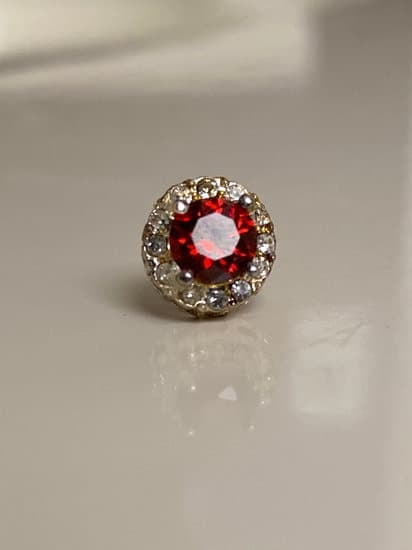Introduction
Soldering is a process which makes use of heat to join pieces of metal together. It involves melting a thin layer of solder – an alloy of mostly tin and lead or silver-based, between them in order to create a solid bond. Solder is commonly used when creating jewelry as it provides a strong and durable bond that can last for many years with proper care. When selecting solder for jewelry, there are several factors to consider such as the type of metal being soldered and the level of hardness desired in the finished product.
Types of Solder Available
Soft Solder: Soft solder is generally made of a combination of lead and tin, and is often used to join small pieces of jewelry or components. It has a relatively low melting point and easy shaping properties, which makes it great for intricate soldering jobs. The downside is that it can be weakened easily when exposed to heat, so avoid using this with pieces that will be repeatedly heated and cooled.
Hard Solder: Hard solder is a combination of alloys such as copper, zinc and silver, with higher proportions of each depending on the type. It has a much higher melting point than soft solder, making it ideal for pieces that will receive regular heating. However, because of its hard consistency it can make intricate shapes more difficult to accomplish.
Silver Solder: This type is mainly made up of silver with other metals included to increase the strength – varying from brand to brand. Silver solder has an even higher melting point than hard solder making it stronger but less malleable when attempting complicated designs. In some cases this extra strength can be beneficial if decorative elements or other components require a stronger bond in order for them not to fail over time due to increased wear on the piece; typical examples being clasps or catches on necklaces or bracelets which may have more weight put upon them when worn regularly.
How to Select the Right Type of Solder
Solder is an essential material for jewelry making, as it can bond most metals and non-metals, such as gold, silver, copper, brass, tin and even plastic. Different types of solder are designed to produce different results. Therefore, when choosing the right kind of solder for jewelry making, you should consider your specific needs.
The most common type of solder is called eutectic soft-solder or easy-flow solder and contains a mixture of two or more metals with a liquid flux to lower the melting point and improve flow. You can find many different variations depending on your needs: hard medium solders often contain lead; medium solders are a good all-purpose option; soft low-temperature solder works best for intricate pieces; colored solders add decorative touches to your pieces; solders that have very thin sections enable detailed breaks (great for clasps and filigree); micro pellets are perfect for tiny jobs where precise control is needed; cold/cold connections allow you to replace stones without disturbing any other parts.
When deciding which type of solder to use for a jewelry project, cost may be an important factor in the decision process. Soft solders tend to cost more than hard solders because they have lower melting points and flow much easier. In addition, colored and specialty solders may also be more expensive due to their ingredients or manufacturing costs. However the quality of these specialized materials often justify the expense when working with delicate jewelry pieces with special designs or applications requiring precision workmanship – such as setting stones in prongs with heat sinks or repairing intricate filigree work.
Best Practices for Soldering Jewelry
In order to get good results when soldering jewelry, it is important to select the appropriate type of solder based on the material and joint. The 3 most common types of solder used in jewelry are silver bearing, hard and lead-free.
Silver bearing solder is widely available and considered the traditional choice for joining metals like sterling silver due to its low melting point which allows easier manipulation while working with the piece.
Hard solder is great for using on harder metals such as brass or gold alloys. It has a much higher melting point than silver bearing so requires more heat however gives more strength for heavier pieces.
Lead-free solder does not contain any lead or cadmium making it a safe option for work with precious metals. This can be harder to work with as it has a higher melting temperature than either silver bearing or hard solder and can make working with details more difficult.
It is also important to have access to proper tools such as flux, tweezers, soldering block/pickle pot, pickle safety tongs, magnification if needed and ventilation when working with any type of soldering since some of these materials can release hazardous fumes during use. Finally, practice makes perfect! If you’re just getting started with soldering jewelry remember that most accidents are due to operator error but only practice will help you gain more confidence in your skills
Tips for Successful Jewelry Soldering
Successful jewelry soldering requires using the right type of solder, flame intensity, flux and other tools. The most common solder used for jewelry is KITZIG silver-bearing solder. It is an easy-flow alloy that melts at a low temperature, making it well suited for soldering gold, silver, and other delicate materials. To prevent overheating of the metal, use a butane torch with an adjustable flame size to bring the material up to the correct working temperature. A borax based flux should be used to control surface oxides and also help the solder flow more easily into place. Also needed for successful jewelry soldering are tweezers, pickle pot and picks or dental tools to manipulate pieces into position before and during soldering. Lastly is solder pickers which are tongs that reduce heating time by transferring already heated material from one area quickly without letting the heat escape too soon. Having the right tools readily available and knowing how to best use them will ensure quality workmanship in jewelry soldering.
Troubleshooting Jewelry Soldering Problems
When soldering jewelry, there are several steps to take if there appear to be problems with the soldering process.
The first step is to identify what type of solder is being used. Jewelry can be soldered using hard solder, soft solder, flux-core solder and laser-welding approaches. Understanding which type of solder is being used will help narrow down what may have caused the soldering issue.
The next step is to check the quality of the materials that are being soldered together. Poor-quality materials may lead to a faulty connection when heated during the soldering process. If this is found to be an issue, it’s best to replace the material before resoldering.
Thirdly, check the temperature setting on your soldering equipment and ensure it’s at the highest recommended temperature for hard or soft solder use according to manufacturer’s advice. Too low a temperature may not fuse joint correctly, while too high a temperature can cause damage or corrosion.
Closing Thoughts
Soldering is one of the most important techniques used in jewelry making, and as such there are many different types of solder available to suit a range of techniques and crafts. Here are just some of the different types of solder you can use for jewelry:
Soft Solder: Soft solders are the most common form of soldering, often used for small detail work or joining two pieces of metal together without melting them both. In comparison to hard solder, soft solder does not have a very high melting point and includes alloys such as lead-free tin-silver alloys.
Hard Solder: Hard solders have higher melting points than soft solder, so they require more heat to melt. This allows you to weld components together with a flame, rather than a soldering iron or torch. These alloys usually include mixtures with silver or gold, and provide incredibly strong bonds.
Silver Solder: Silver solder is an alloy made up primarily of silver and copper, with additions such as tin to increase its malleability. Silver solders are usually harder than other forms and produce excellent joints that require less heat to melt than hard solders. They can be used not only for joining two pieces together but also for metalwork where decoration is required, such as texturing metal surfaces or creating bead accents.
Low Temperature Solder: Low temperature solders offer an alternative method that doesn’t demand extremely high temperatures during the bonding process. This method is great for beginners who are just starting out in jewellery making as it offers more control over the temperature and helps reduce risk of damaging your materials. Additionally, low temperature solders often contain no lead in their composition making them safer for human skin contact.
No matter what kind of jewellery project you’re working on there’s surely at least one type of compatible solder available which will work perfectly for your needs! Just keep in mind whatever material you’re working with – whether it is copper, brass or silver – when selecting your chosen alloy. Also try experimenting with different methods including soft soldering, hard soldering and low temperature methods; because every technique has its own merits which may prove beneficial depending on what kind of jewellery piece you’re making!

Welcome to my jewelry blog! My name is Sarah and I am the owner of this blog.
I love making jewelry and sharing my creations with others.
So whether you’re someone who loves wearing jewelry yourself or simply enjoys learning about it, be sure to check out my blog for insightful posts on everything related to this exciting topic!





